Japanese sword: deeper and deeper ... (part of 3)
Man looks at cherry blossoms
And on the belt is a long sword!
Mukai Koray (1651 - 1704). Translated by V. Markova
If we turn to the material “Samurai and Katanas: Truth and Fiction,” which was previously published on VO, we learn from it that “there are several types of Japanese swords. The most famous, of course, is the katana. ” This is a rather controversial statement, since “several” are more than three, and it is important here in which European or Japanese tradition we consider the typology of Japanese swords. To begin with, the no less famous Japanese sword is tati. And they just fought, while story Katana came mainly in the years of Edo-era peace. The second is the length of the sword. The material states that the katana had a satellite sword - a wakizashi from 30 to 60 in length. But if the length of the sword was less than 30, then such a “sword” was already considered a tanto dagger. That is, the same sword in principle could be considered both a sword and a dagger. That is, for Europeans, the blade doubled to katana is usually a dagger, even a long one, but the Japanese will understand what it is, depending on the length, although the mount of the blades themselves may be the same.
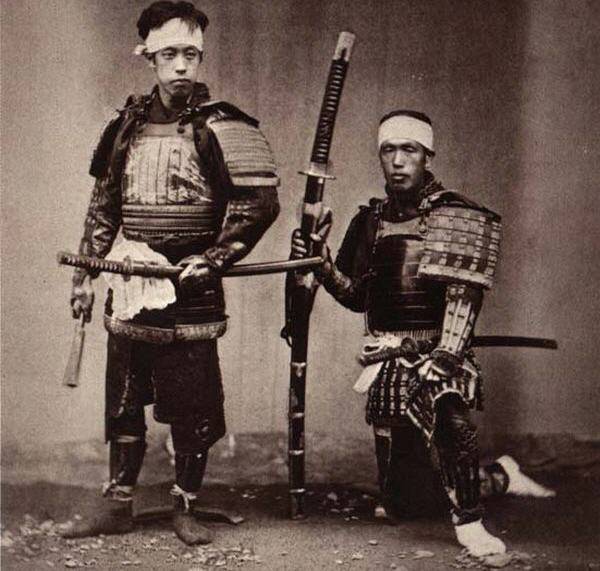
You should always give captions under the photographs illustrating any article. Hope that everything is clear, should not be. Here, for example, in this photo we clearly see three types of Japanese swords at once: a tati sword - in a samurai’s hand (the rings for the pendant are visible on the sheath), a “field sword” of a nodati length of about 1,5 m and more, which, however, riders were not used, and used asigaru infantrymen. It was these very swords that were worn behind their backs, because it was simply uncomfortable in another way. Finally, the third sword in the belt of the seated owner Nodati is a katana.
But here it is necessary to return to the sword of tati and indicate that the custom of wearing two blades - a pair of daisyos, comes from antiquity. The sword-satellite Kosi-Gatana-Tati satellite was placed vertically on the left side of the body. And if the tati were hung up to the belt, then the ko-gatan was thrust behind him so that the sheath passed through the tsurumaki — a ring for a spare bowstring. And she, in turn, should be located between the rings asi, on the sheath of tati. It would seem that special in this arrangement? But the Japanese would not be Japanese if they had not invented a special name for this provision: tsurumaki-gotame-no-sita-ho. To say that the katana and the wakizashi were simply thrust over the belt is, of course, also possible. It was. But this is not entirely accurate. For their fastening, there were also various devices in the form of a piece of leather on cords, which was tied to the waist and already in its loops or in a leather tube, and not at all by a belt, a katana was inserted.
One of the options kosiat.
If this mount was for one sword, then it was called kata-kosiata, and if for vakizashi, then ryo-kosiata, and this is the simplest option, but there were also more complex ones. Naturally, under the belt they were not visible, but in fact the samurai were very clever and did not want to lose their precious swords, keeping them just behind the fabric belt.
Well, now let's take a rare opportunity and take a look at the photo files of the Tokyo National Museum, captured on a Kodak film and showing swords and armor from different eras. We begin, of course, with tati, since, starting from the Heian era, the samurai’s sword was he — the horseman’s sword. Before us is a S сdzoku-Tati sword (“court uniform sword”) - a richly decorated sword worn by emperors, shogun and notable daimyo.
And this is his grip!
Now we have a more or less unified and complete picture. That is, in the history of Japan, we also see two great epochs: the era of domination of the equestrian sword of the tati and the universal sword of the katana, the latter - we emphasize this - spread in Japan after the appearance of the fire weapons. After all, the first arrows from it were not peasants, but samurais. It was not fitting for them not to have daisё, but they were completely uncomfortable with carrying a horsetail sword on their side, which is why they switched to the rim of buke-zukuri. That is, in the era of wars that preceded the unification of Japan, it was the katana that first became the sword of Asigaru - the shooters from firearms, and only then, in the era of peace, this sword turned into a constant samurai satellite!
Another sword tati era Kamakura. This sword was held with one hand. In the other there were reins. The handle is trimmed with shark skin and decorated with small figures of birds. The suspensions are made of copper wire and are called hyogo-kusari. (Tokyo National Museum)
These are details of the guard of the tsuba of this sword, adorned with all the same figures of birds. In the center, in fact, tsuba. Along the edges in the front and upturned position are shown seppa washers, with the help of which the tsuba was fixed on the blade. As you can see, there are two - two seppas of small and two o-sepps - large. The presence of o-seppa was characteristic precisely for tati swords.
Another court sword decorated with turquoise. (Tokyo National Museum)
In Japan, a newly polished sword was taken to be tested and mark the result on the shank. To do this, they invited special masters of the sword, who both lived and experienced them. And this was not a simple matter, because, having broken the sword, the tester had to pay for it. Usually chopped raw twisted straw mats. But sometimes they also cut the corpses of those executed, hanging by their arms to the crossbar or laid on each other and on a thick straw mat. The easiest was clipping the brush. Cutting across the hips, with a cut of strong hip bones was considered the pinnacle of skill. In this case, the blows were of such strength that they could be cut and a wooden block dodan, put under the body. It is known that once so seven bodies were laid at once, laid on each other! It is clear that such masters, along with blacksmiths and blade appraisers, were highly respected people in the samurai society. There is written evidence dating back to the 17th century that some famous masters chopped down their swords with rifle barrels. The question, however, is not what they are, but how much they can be trusted.
A pair of dysho sonae swords - katana and wakizashi, allegedly belonging to Toyotomi Hideyoshi. (Tokyo National Museum)
Since it was believed that a samurai could not kill "just like that," but he was obliged to kill if he was insulted, some samurai, having bought a new sword, went to test it at crossroads, where they trapped some peasant traveler and announced to him, that he had committed an act that was clearly offensive to him — not so bowed, for example. After that, to stay alive, the peasant had only two ways: either to escape, which was not easy at all, or ... to kill a samurai, which was even harder. If he didn’t do this, he risked being chipped from shoulder to hip!
Uti-gatana, with a scabbard painted with aoi roses - the emblem of the Tokugawa clan. (Tokyo National Museum)
As for the purely journalistic statements that "samurai swords can cut European pieces into pieces!" Or that "their blades are made of 1000 metal layers!", We will leave that on their conscience.
Hikihad sword case. Do you know what is under it? Tiger skin! The peculiarity of the Japanese was to cover it all. This is truly "people with a case"! (Tokyo National Museum)
Although such judgments are not surprising. Come to any museum where there are samples of old cold weapons and what will you see there? Some rusty pieces of iron with signatures, like swords and daggers very remotely. The swords of the European Middle Ages in very good condition remained very small. But Japanese swords in any of the museums, wherever you come, amaze with their beautiful appearance and you can not even doubt whose opinion will be decided by non-professionals.
Kasira handle (right) and coupling (futi).
On this handle, the tsuba, two parts of the seppa are clearly visible, on the handle there is a decoration - manuki and at the end of the handle - the head of Kasir. (Tokyo National Museum)
Even the best Japanese katana is only steel, although of high quality, which means it may well break. Both European swords and Japanese were made by repeatedly forging steels of different quality, even the tips of spears made of Damascus forged steel found in the Baltic States are known.
Perhaps, perhaps the most concise and beautiful tsuba - "Crab". (Tokyo National Museum)
Kogay with a spoon for cleaning the ears. (Tokyo National Museum)
As for the technology of differentiated hardening, then, as already noted, it was used not only by the Japanese, but as the German historian Thomas Libible writes about it, and the gunsmiths of the European Middle Ages, but in his opinion, the exact characteristics of this process are unknown. Finally - sharpening. But here everything depends solely on the angle at which the blade is sharpened. However, it is not written anywhere that the European swords were blunt and could not be cut. Already in our days trial cutting of straw mats was carried out using replicas of medieval swords and the results were approximately the same as when cutting them with a Japanese sword.
There is one more important circumstance. In Europe, swords, and even armor, were often forged, as the metal was expensive. In Japan, too, but who would come up with kami dwelling?
Short and simple tantто. (Tokyo National Museum)
There must be protection against any sword. Before us is the “new armor” - the “torso of the Buddha” (neo-do), which allegedly belonged to Kato Kiyomas, one of Hideyoshi's military leaders during the Korean War in 1592.
The same armor is a rear view.
That is why there are so many Japanese swords. It is known that in the XIII century the blacksmith took 18 days for one sword of a tachi, and for the masters it took nine frames. Six days were required to coat the sheath with varnish, two to tanners and another 18 days for everything else. In any case, it could take more than 20 days to forge the sword strip itself, that is, in general, roughly it can be considered that - one month - one sword.
There is an estimate that before the Meiji Revolution, 13000 swordsmen lived and worked in Japan. It is clear that besides them there were those who were not known, but for someone it was just a hobby. That is, it is permissible to round this figure to 20000. And if each of them has made at least 100 swords in his entire life, it turns out that by the year 1868 in Japan there were about ... two million of them made! It is not surprising that there are still so many of them.
European-style Namban-Gusoku armor, allegedly belonging to Sakakibar Yasumas. The helmet and breastplate are made in Europe, and all other parts of the armor are made in Japan. (Tokyo National Museum)
The next difference between Japanese and European swords is the presence of crosses and tops on the last arms. The European "cross" served to protect the hand from strikes against the shield, while the Japanese tsuba was intended for a completely different purpose. With the crosshair of the European sword, it was possible to strike the face in the same way as with the top of the handle. But no Japanese would have thought of taking his sword by the blade and hitting it with the handle in the face of the enemy. In the European practice of fencing with swords such a technique, however, is found. That is, in general, the sword for the European is more “universal”, in the sense of the methods of owning it, weapons, but for the Japanese it is more traditional.
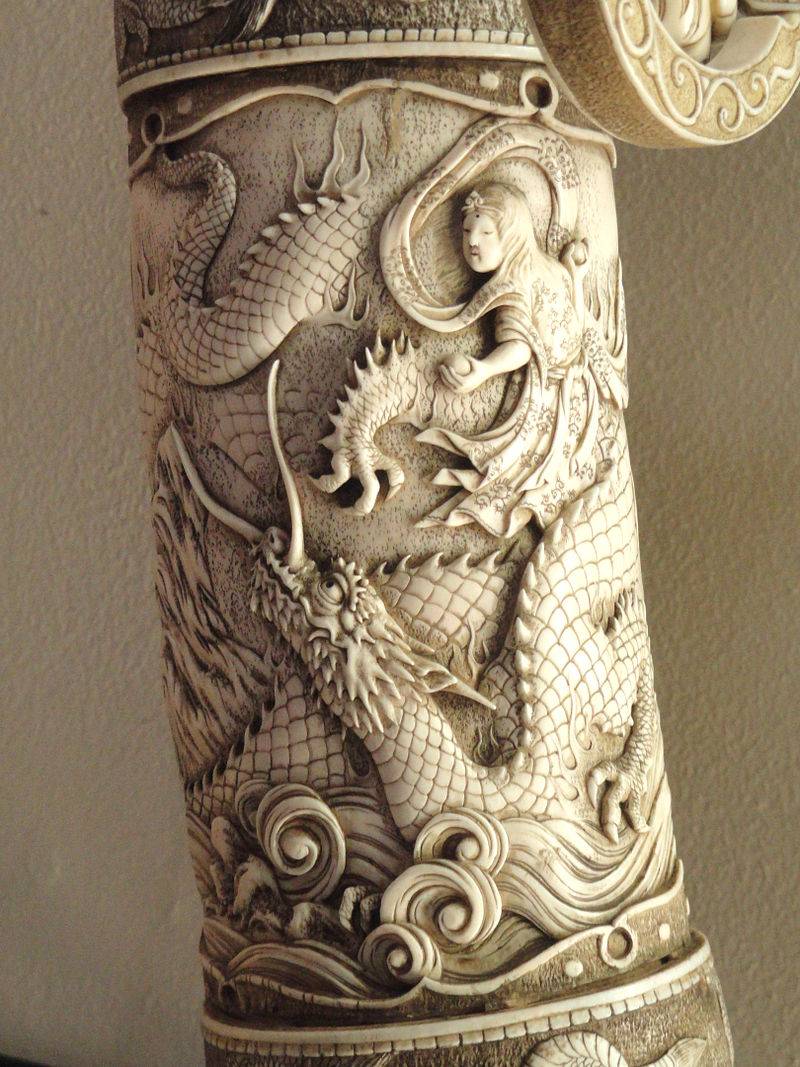
Detail of ivory era sheath. (George Walter Vincent Smith Museum of Art. Springfield, Massachusetts, USA)
To be continued ...
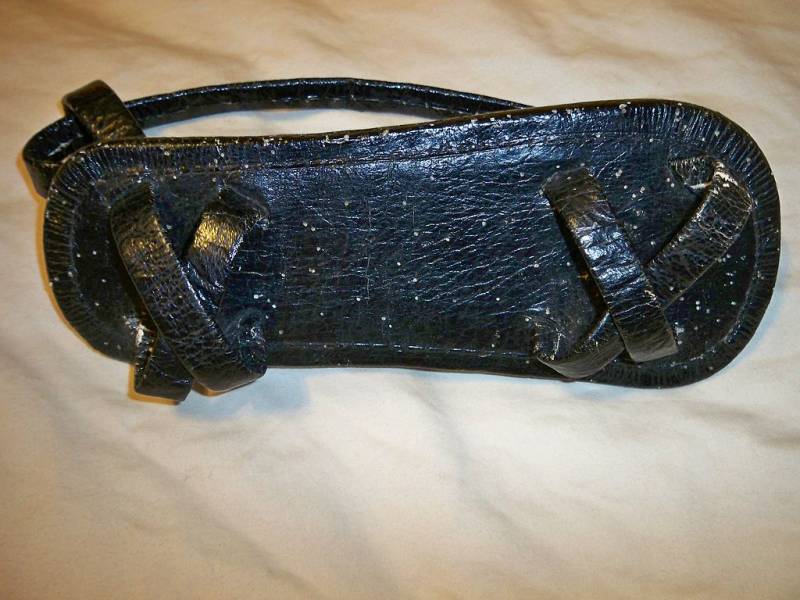

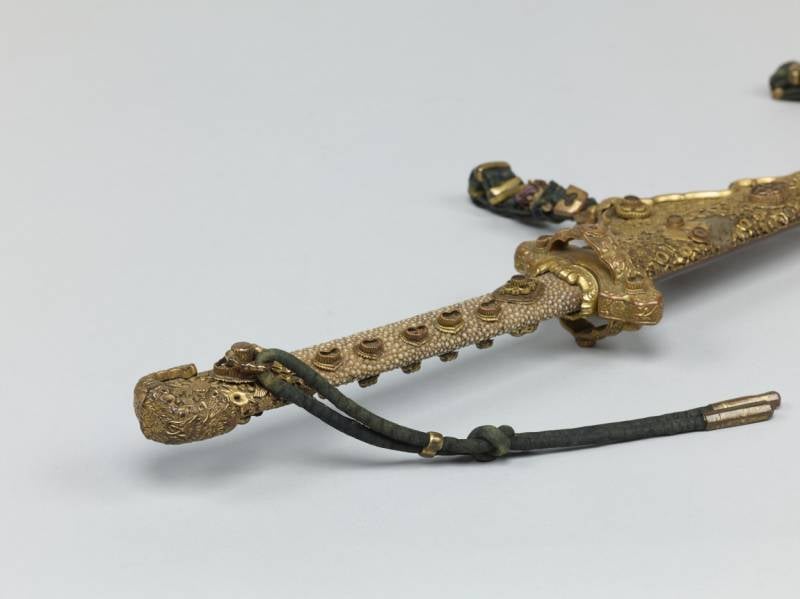
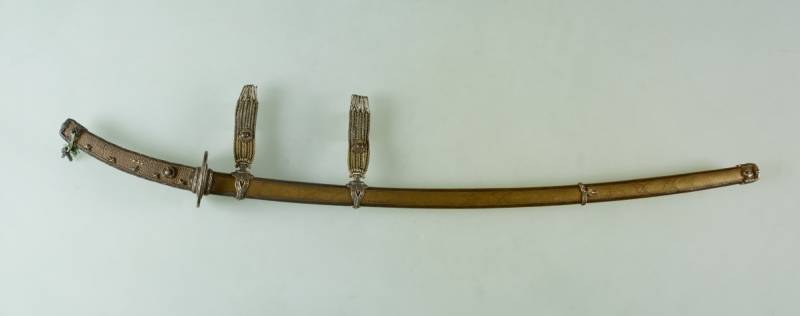
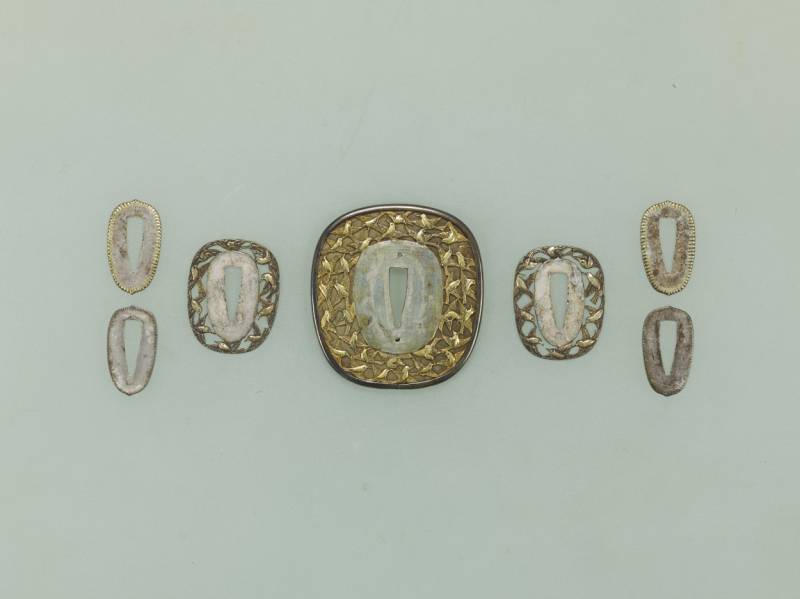

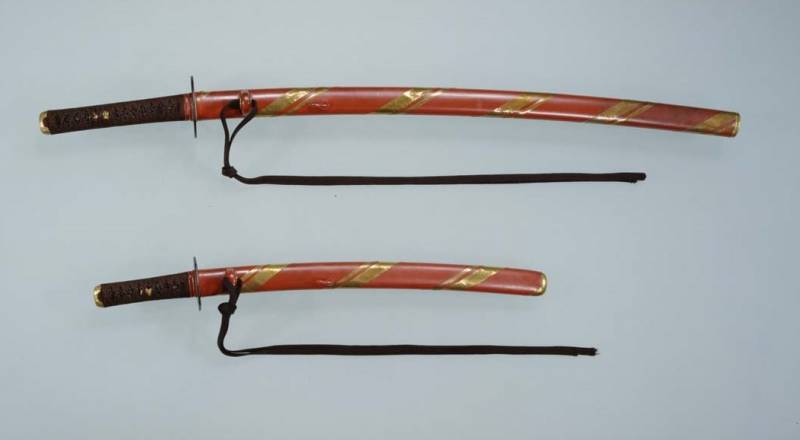
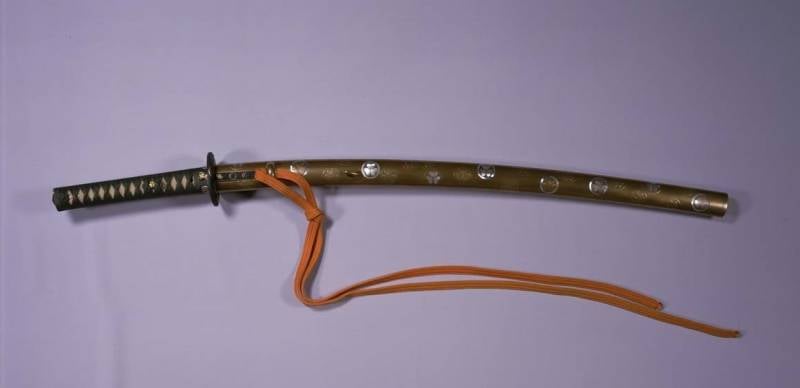
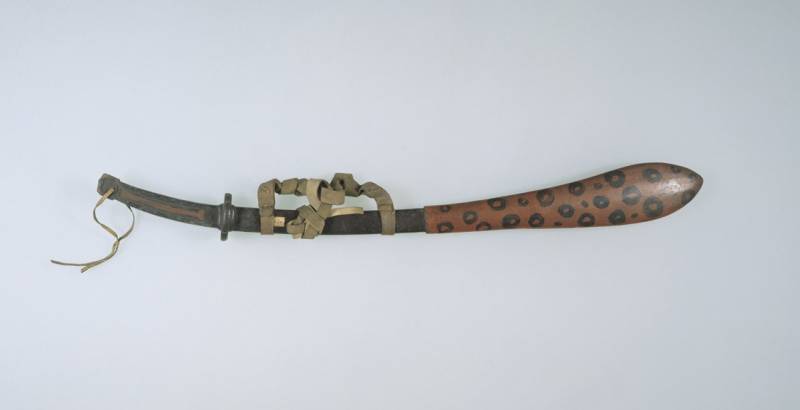
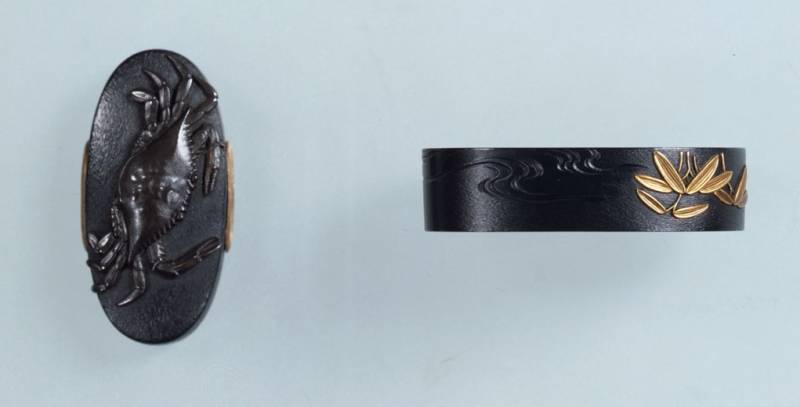
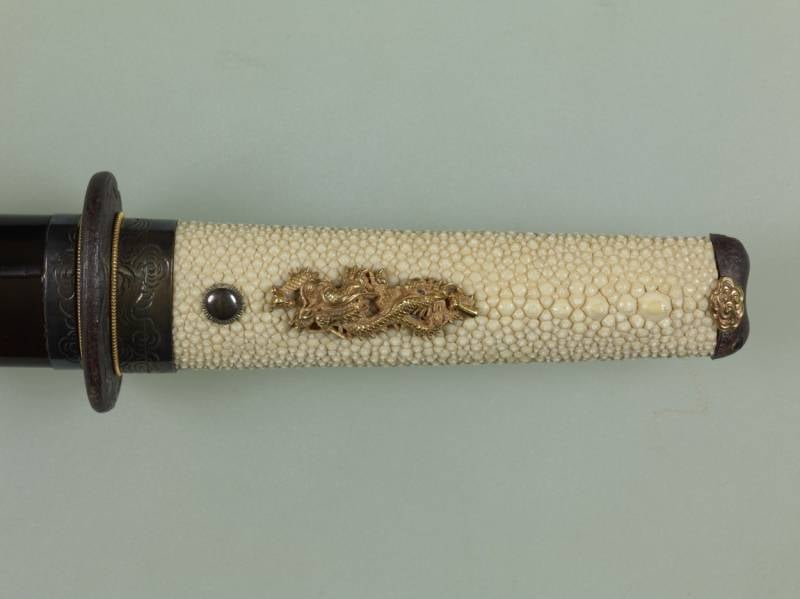
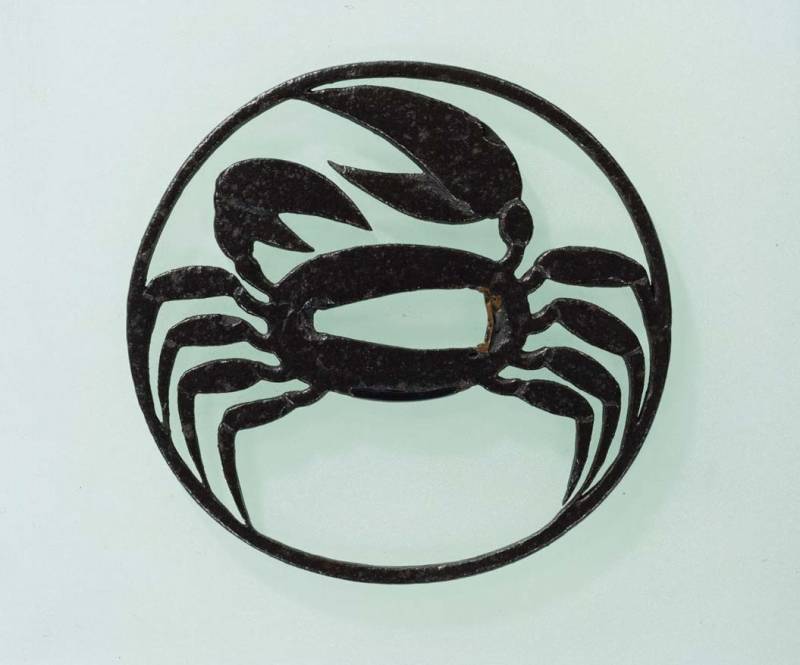
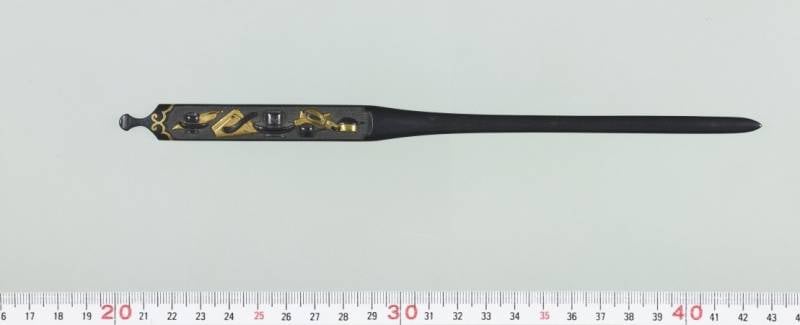
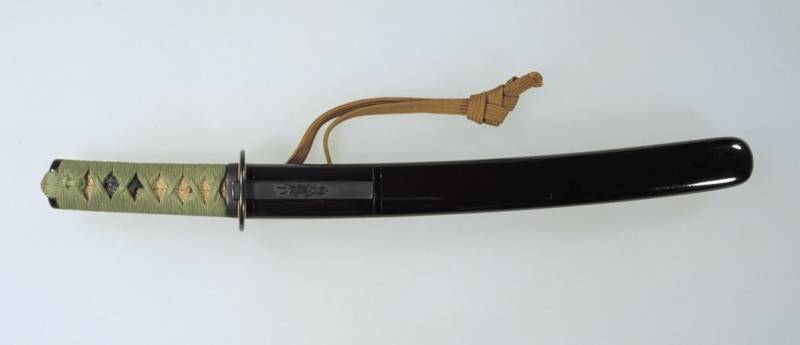
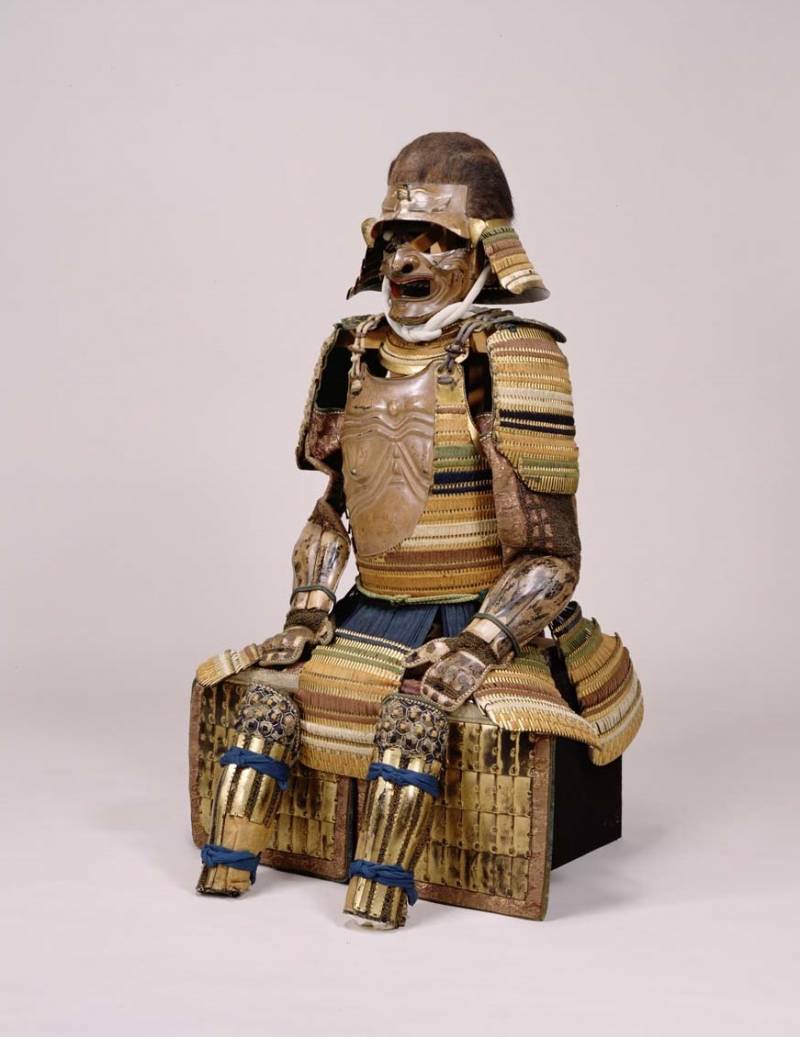
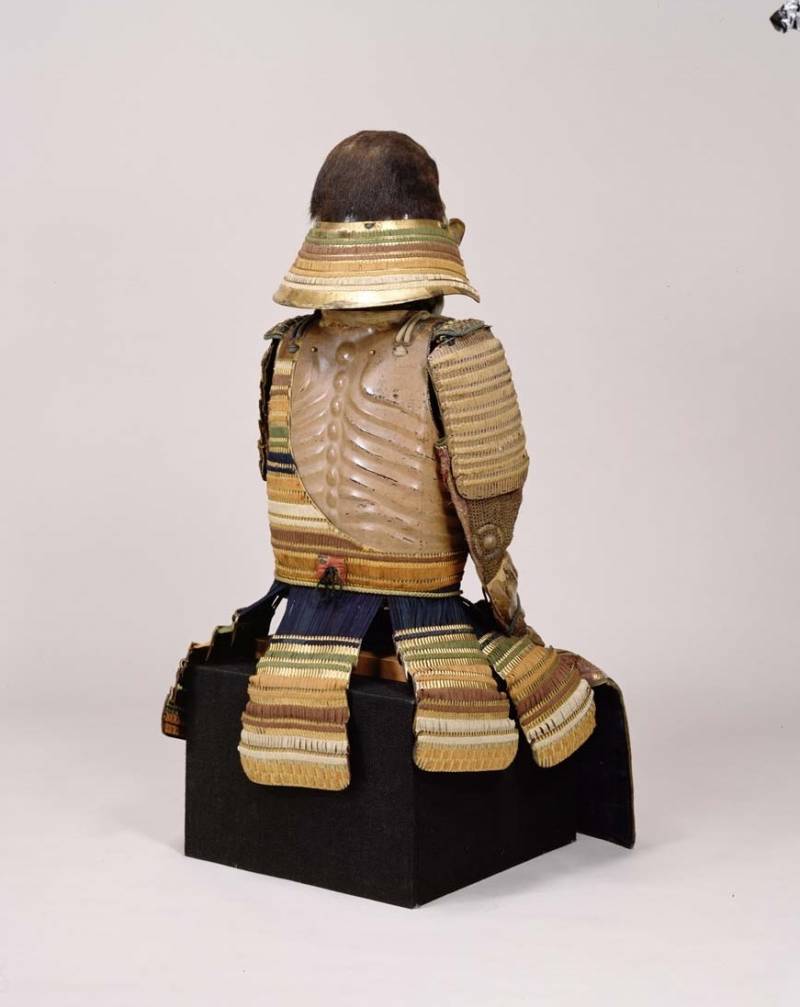
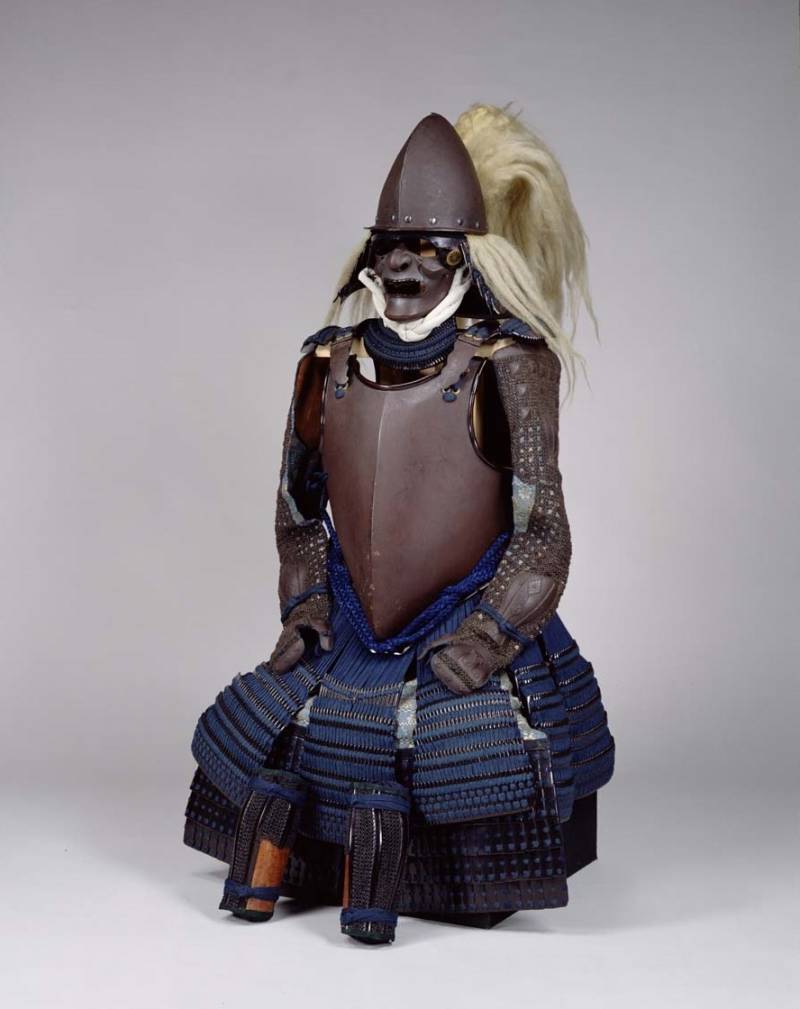
Information